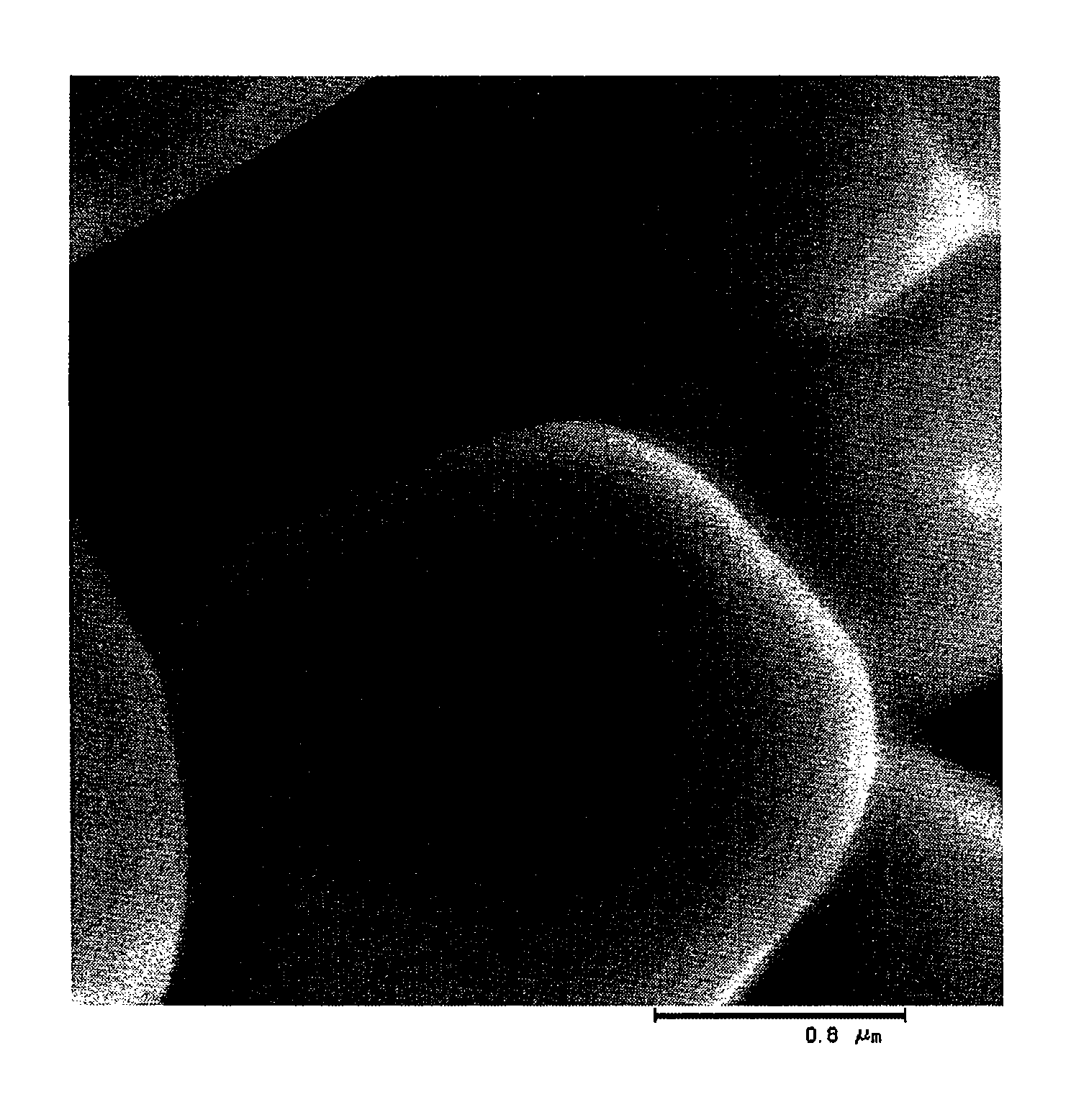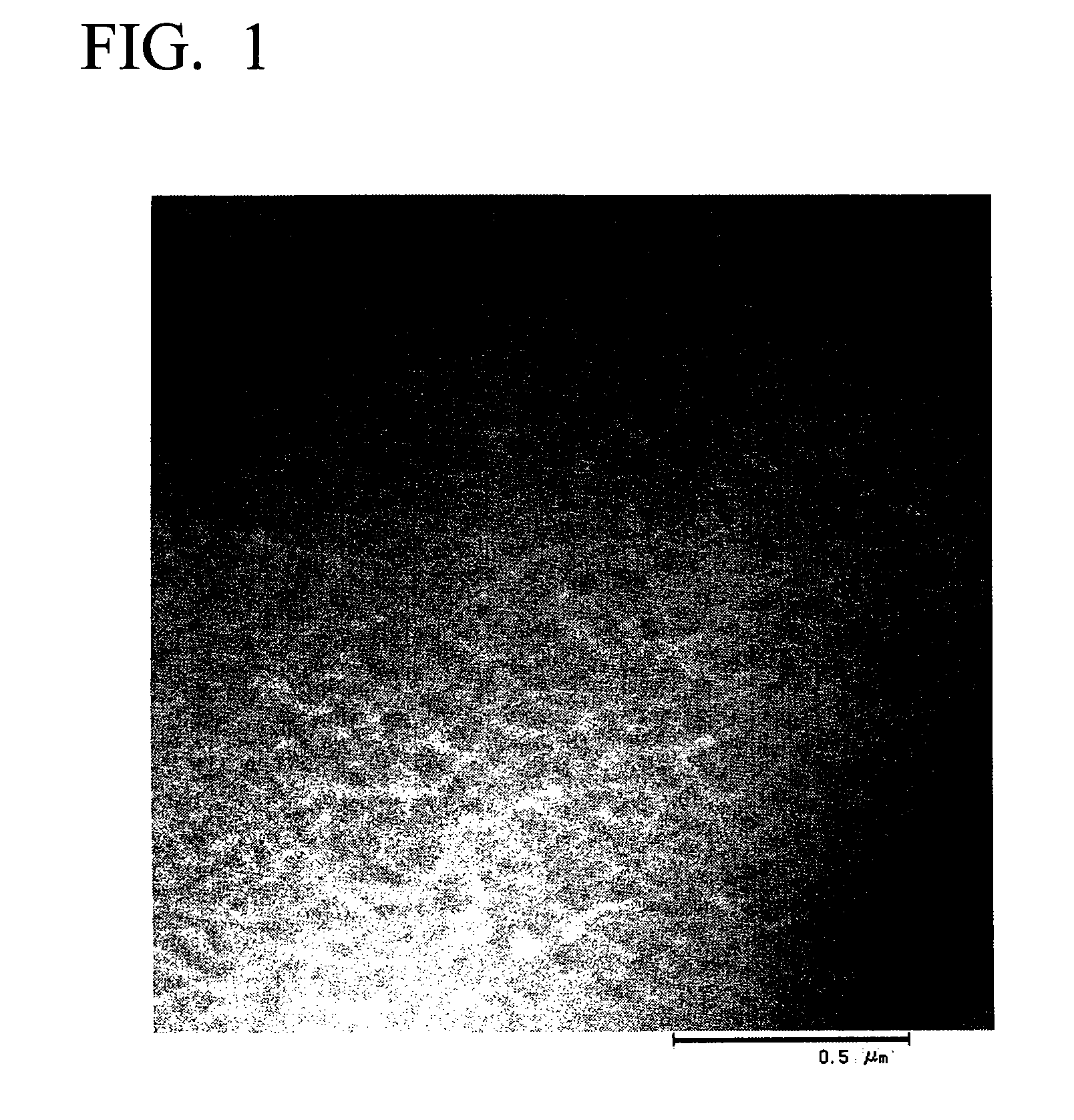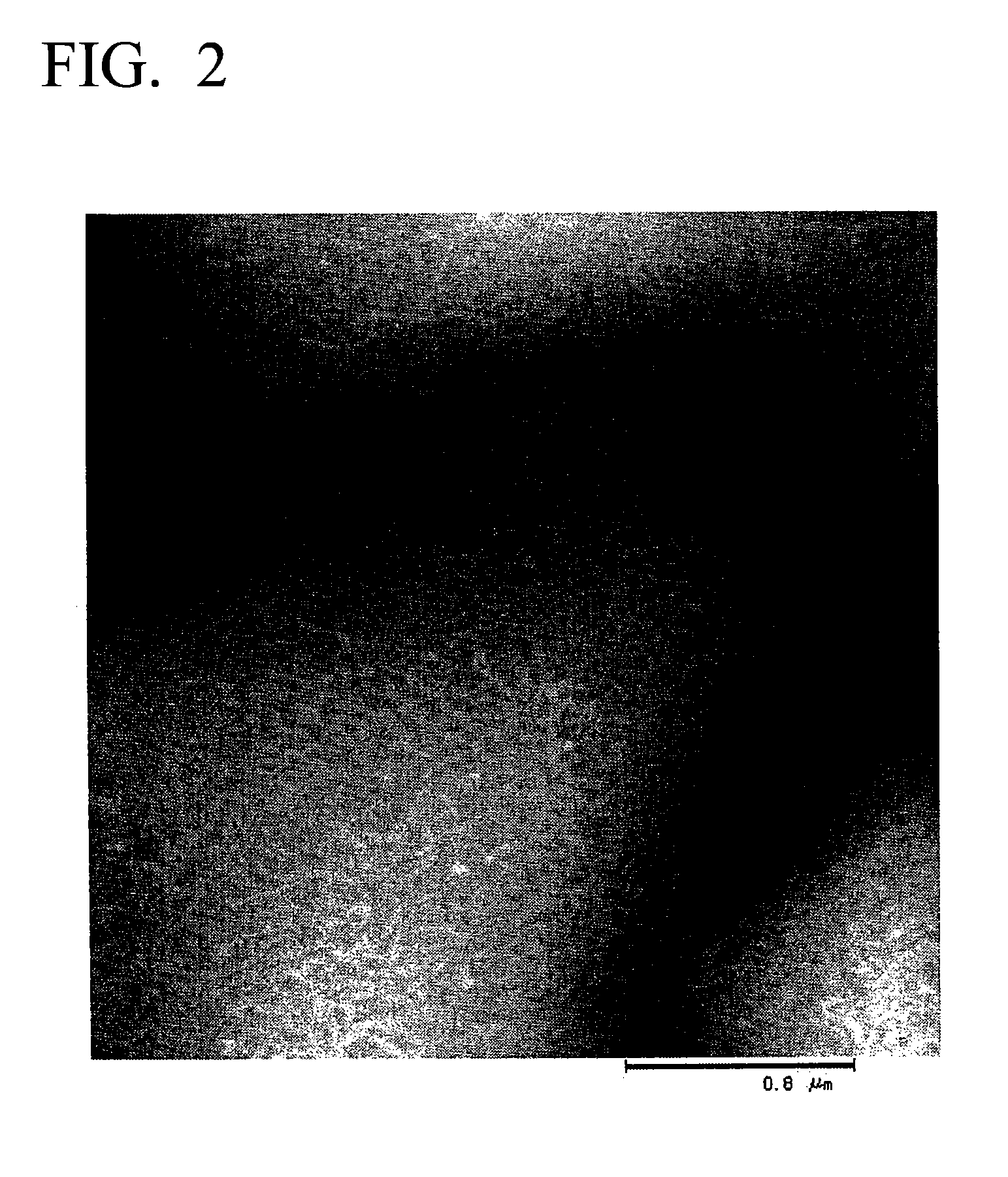Positive electrode forming material, component thereof, method for producing the same and rechargeable lithium-ion battery
a technology of positive electrodes and forming materials, which is applied in the direction of non-metal conductors, cell components, conductors, etc., can solve the problems of disadvantageous gas generation, reduced discharge capacity, and reduced ratio of lithium-containing transition metal oxides, and achieve the effect of improving conductivity
- Summary
- Abstract
- Description
- Claims
- Application Information
AI Technical Summary
Benefits of technology
Problems solved by technology
Method used
Image
Examples
example 1
(1) Preparation of CNF Dispersion
[0062]Tubular carbon nanofiber (CNF) having an average fiber diameter of 20 nm was added to a mixed liquid of nitric acid (concentration: 60%) and sulfuric acid (concentration: 95% or greater) such that the proportion of the CNF, the nitric acid and the sulfuric acid was 1:5:15 (parts by weight). The mixture was then heated and surface-oxidized. The obtained solution was filtered and remaining acid was removed after washing several times. The filtered solution was then dried and powderized. The obtained powder was dissolved in N-methyl pyrrolidone (NMP) to provide a CNF dispersion.
(2) Preparation of Positive Electrode Forming Material and Fabrication of Positive Electrode
[0063]LiCoO2 having an average particle diameter of 15 μm (capacity: 140 mAh / g) was prepared as a lithium-containing transition metal oxide and polyvinylidene fluoride (PVdF) was prepared as a binder. First, a NMP dispersion of PVdF and CNF was mixed at a solid content weight ratio o...
example 2
[0064]A positive electrode was fabricated as in Example 1 except that the proportion of LiCoO2, PVdF and CNF was 100:5:4 (parts by weight).
example 3
[0065]A positive electrode was fabricated as in Example 1 except that the proportion of LiCoO2, PVdF and CNF was 100:5:3 (parts by weight).
PUM
| Property | Measurement | Unit |
|---|---|---|
| diameter | aaaaa | aaaaa |
| particle diameter | aaaaa | aaaaa |
| aspect ratio | aaaaa | aaaaa |
Abstract
Description
Claims
Application Information
 Login to View More
Login to View More - R&D
- Intellectual Property
- Life Sciences
- Materials
- Tech Scout
- Unparalleled Data Quality
- Higher Quality Content
- 60% Fewer Hallucinations
Browse by: Latest US Patents, China's latest patents, Technical Efficacy Thesaurus, Application Domain, Technology Topic, Popular Technical Reports.
© 2025 PatSnap. All rights reserved.Legal|Privacy policy|Modern Slavery Act Transparency Statement|Sitemap|About US| Contact US: help@patsnap.com



